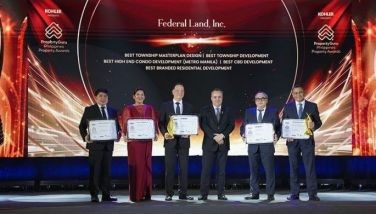Stories of the Filipino soldier-warrior

At almost every major turning point in our nation’s history, the Filipino soldier is at the center stage. From the Katipunan uprising to the Philippine Revolution to the Second World War to the struggle against the Hukbalahap to the EDSA People Power Revolution, we find stories of the Filipino soldier intertwined with stories of a people’s struggle. A major part of this saga is the century old conflict in Mindanao.
It is not surprising that so many books have been written that chronicle the history of the Filipino soldier. In a previous column, I wrote about one such book – Gallantry in Mindanao by Ben Cal. It does not talk of any grand strategy or purpose for the renewal of the Mindanao conflict during the Estrada years. It is a collection of narratives about the heroism of soldiers who fought for the Republic. Here are some books I would recommend.
Philippine Campaigns by Uldarico Baclagon 1952 Graphic House Manila.
This is the classic book on the history of the Filipino armed forces and is a must reading for serious students and readers. The author was an officer of the AFP and a former instructor on Tactics and Military Art in the Philippine Military Academy. The book includes detailed narratives of campaigns and battles. It also includes 21 battle maps.
Its 17 chapters are divided into five parts. The first part is “Campaigns During the Spanish Regime” which spans the period from the Battle of Mactan of Lapulapu and Magellan to the Philippine Revolution. The second part is “War With the United States” which begins with American occupation of the Philippines and the Filipino American War; and, ends with the by
The third part narrates the “Defense Against Japanese Invasion.” It begins with the prelude to the Japanese invasion and the Japanese landings and drive towards Manila. It ends with the defense of Bataan, Corregidor, Visayas and Mindanao. The fourth part is the “Resistance Movement” which chronicles the guerrilla forces of North and Central Luzon; the resistance movement in the Visayas; and, the resistance movement in Mindanao. The fifth part is “The Liberation Campaigns” which begins with the Leyte-Samar campaign; then the Luzon campaigns; and, finally the Visayas-Mindanao campaigns.
Baclagon dedicates his book to the Filipino soldier “...in the hope that it will help preserve the honor, glory and honor of Filipino arms.”
The WAR in CEBU by Mojares, Taylor, Avila, Colamaria and Bersales 2015, University of San Carlos Press.
Most military books, especially about the Second World War, have focused on Luzon and Metro Manila. Recently, there are some books that have been written about the Mindanao conflict. The publishers of this book have pointed out that World War II was a national experience and not confined to one locale. I might also add that the conflicts in Mindanao and the various struggles with the Left, from the Hukbalahap to the New People’s Army (NPA), form part of our national experience and history.
The major contribution of the book is that it tells the story of the Second World War – through dramatic stories and images – in another major part of the country. It has 14 chapters in 260 pages with nearly 500 truly dramatic photographs and images of the war as it happened in Cebu. The resistance movement in Cebu was one of the best organized in the nation. It even had its own postage stamps, currency and women auxiliary group. But, it had its own dramatic episodes. It begun as a unified command under Cushing and Fenton. It ended with a unified group under Cushing after Fenton was arrested and executed by firing squad.
The book begins with a quotation from General Douglas MacArthur: “Give me ten thousand Filipino soldiers and I will conquer the world.”
HUAQUIAO WARRIORS: Chinese Resistance Movement in the Philippines 1942-1945 by Yung Li Yuk-wai 1996 co published by AdMU and Hong Kong U Press.
The participation of the Chinese-Filipino in the nationalist struggle and resistance movement is one of the least documented in Philippine history. During the Second World War, the Chinese-Filipino community was fully supportive of the struggle against the Japanese invasion. There were actually two major guerrilla forces formed within this community. The first was the Leftist Chinese-Filipino Guerrilla Forces; and, the second was the Rightist Chinese-Filipino guerrilla forces.
On May 19, 1942, The Philippine Chinese Anti-Japanese Guerrilla Force (Hua Zhi) was established and joined the communist leaning Hukbalahap as Squadron 48. Huang Jie was the chief commander, Cai Jinhua was the political instructor, while Chen Cunshen and Wang Xixiong was the Chief of Staff.
The rightist Chinese Filipino guerrilla forces were composed of four main guerrilla groups – the Chinese Overseas Wartime Hsuekhkan Militia (COWHM); the Pekek Squadron (Squadron 399), the Philippine Chinese Youth Wartime Special Service Corps (PCYWSSC); and the Chinese Volunteers in the Philippines (CVP).
The CVP was the largest of the four groups; and seemed to be the most active in terms of guerrilla warfare. It had bases in Pampanga and Nueva Ecija. It also conducted raids and ambushes. Some of its members eventually were awarded Military Merit Medals. Purple Hearts, Bronze Medals, Bronze Crosses and Silver Stars from the United States.
Closer Than Brothers: Manhood at the Philippine Military Academy by Alfred McCoy 1999.
This book compares two generations of graduates from the Philippine Military Academy ( PMA) the classes of 1940 and 1971. The story of these two classes has become the history of the Philippine armed forces from the 1930s to the 1990s. It is based on extensive interviews plus the diaries and memoirs of what the author calls “...the secretive brotherhood that is the Filipino officer corps.”
Creative writing classes for kids and teens
Young Writers’ Hangout for Kids & Teens on July 1 and July 22 (1:30-3pm/independent sessions). All sessions are at Fully Booked Bonifacio High Street. For registration and fee details text 0917-6240196 or email [email protected].
* * *
Email: [email protected]
- Latest
- Trending


























